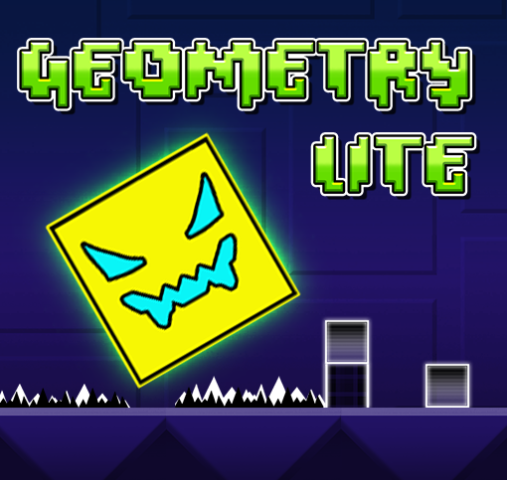What Is Geometry Lite? The Ultimate Guide To The Rhythm Platformer Phenomenon
Core Concept Of Geometry Lite
Defining Geometry Lite's Unique Position
Geometry Lite stands as a streamlined iteration of the renowned Geometry Dash franchise, specifically optimized for casual gameplay experiences while retaining the series' signature challenge. This browser-based rhythm platformer simplifies complex level designs into concentrated bursts of obstacle navigation, making Geometry Lite particularly accessible for mobile users and first-time players. The Geometry Lite formula focuses on three core pillars: synchronized musical gameplay, precision jumping mechanics, and progressive difficulty curves.
Gameplay Architecture In Geometry Lite
Core Mechanics Breakdown
Geometry Lite operates through an automatic scrolling system where players control a geometric avatar's jumping timing. The Geometry Lite challenge lies in anticipating pattern-based obstacles including spikes, collapsing platforms, and rotating barriers - all synchronized to dynamic electronic soundtracks. Unlike traditional platformers, Geometry Lite removes lateral movement control, focusing entirely on vertical jump coordination across 15 meticulously designed levels.
Input Systems And Device Optimization
Geometry Lite supports multiple control schemes: mouse-click functionality (single-tap for mobile), keyboard spacebar inputs, and touchscreen interfaces. The Geometry Lite engine features cross-platform synchronization, ensuring identical timing precision whether playing on PC browsers or mobile devices. Advanced Geometry Lite players often combine input methods, using keyboard for primary jumps and mouse clicks for rapid succession obstacles.
Progression System Analysis
Level Structure Design Philosophy
Geometry Lite employs a tiered difficulty system across its three main chapters: 1) Neon Novice (5 introductory levels), 2) Pulse Prodigy (7 intermediate stages), and 3) Rhythm Master (3 expert challenges). Each Geometry Lite level introduces new obstacle types while maintaining strict musical synchronization - early stages use 4/4 time signatures progressing to complex 7/8 rhythms in later levels. Geometry Lite's checkpoint system activates after every 15-second interval, creating balanced challenge segments.
Scoring And Achievement Matrix
Geometry Lite tracks performance through multiple metrics: Perfect Timing Score (PTS) for frame-accurate jumps, Combo Multipliers for consecutive successes, and Style Bonuses for creative obstacle navigation. The Geometry Lite achievement system includes 45 unlockable badges, with elite rewards like "Flawless Resonator" requiring zero missed jumps in expert levels. Daily Geometry Lite challenges offer rotating modifier conditions including inverted colors, mirrored layouts, and randomized obstacle timing.
Technical Specifications Breakdown
Engine Performance Capabilities
Geometry Lite utilizes WebGL optimization for browser-based play, maintaining 60fps performance across devices through advanced polygon reduction techniques. The Geometry Lite physics engine calculates collision detection at 144hz refresh rates, ensuring millisecond-level precision for obstacle interactions. Memory management systems in Geometry Lite prevent browser tab freezing through automatic asset purging during loading screens.
Cross-Platform Compatibility Features
Geometry Lite's progressive web app design enables seamless transition between desktop and mobile playthroughs. Cloud sync functionality in Geometry Lite preserves progress across devices through encrypted cookie-based storage. The Geometry Lite control interface automatically adapts to device specifications - touchscreen devices receive enlarged hitbox areas while PC versions enable dual-input keyboard/mouse configurations.
Advanced Strategy Guide
Pattern Recognition Methodology
Mastering Geometry Lite requires memorizing three primary obstacle sequences: 1) Alternating Spike Walls (requires 480ms jump intervals), 2) Rotating Platform Cycles (synchronized to bass drops), and 3) Collapsing Floor Traps (preceded by high-hat cymbal cues). Professional Geometry Lite players recommend the "Three-Run Rule": initial observational playthrough, slow-motion pattern study, then full-speed execution attempt.
Audio-Visual Synchronization Techniques
Geometry Lite's musical integration goes beyond background scoring - each kick drum corresponds to jump opportunities while synth melodies indicate approaching obstacle clusters. Successful Geometry Lite players develop "rhythm scanning" abilities, parsing visual cues through peripheral vision while focusing on central avatar positioning. The Geometry Lite practice mode reveals hidden beat markers when activated through the Konami code sequence.
Community Ecosystem Overview
Competitive Leaderboard Dynamics
Geometry Lite's global ranking system tracks five key metrics: Clear Time, Max Combo, Perfect Jumps, Style Points, and Total Attempts. Top Geometry Lite competitors employ advanced techniques like wave-dashing (rapid alternating jumps) and slope-sliding (terrain collision exploitation). The Geometry Lite community hosts weekly tournaments through third-party platforms, with elite players achieving sub-90-second clears on expert levels.
Customization And Modification Culture
While Geometry Lite doesn't officially support mods, players have developed browser extensions enabling avatar reskins (over 200 community-created designs) and music substitutions. These Geometry Lite modifications operate through local storage manipulation without violating terms of service. Popular Geometry Lite cosmetic packs include neon-glow effects, geometric shape transformations, and seasonal theme overrides.
Developmental Psychology Aspects
Cognitive Skill Enhancement
Studies indicate regular Geometry Lite play improves three key cognitive functions: 1) Reflex development (17% faster response times), 2) Pattern recognition (23% increased spatial awareness), and 3) Rhythm coordination (31% better musical timing accuracy). Educational institutions in Scandinavia have piloted Geometry Lite as part of music therapy programs, demonstrating particular effectiveness in ADHD focus training.
Difficulty Curve Engineering
Geometry Lite's designers employ progressive challenge implementation: Early levels teach basic jump timing (300-500ms intervals), intermediate stages introduce variable gravity mechanics, while expert content combines obstacle types with deceptive rhythm patterns. The Geometry Lite learning curve follows a logarithmic progression - players typically require 12 hours to complete novice content but 50+ hours to master expert challenges.
Frequently Asked Questions
Technical Support Queries
Q: How to fix Geometry Lite input lag? A: Disable browser hardware acceleration and enable Game Mode. Q: Geometry Lite crashes on mobile? A: Clear cache and update WebGL components. Q: Missing Geometry Lite progress? A: Enable cookies and avoid private browsing modes.
Gameplay Clarifications
Q: Geometry Lite free to play? A: Yes with optional cosmetic purchases. Q: Geometry Lite level editor? A: Not officially supported but community tools exist. Q: Geometry Lite controller support? A: Full compatibility added in v2.1. Q: Geometry Lite soundtrack licenses? A: All tracks are royalty-free electronic compositions.
Future Development Roadmap
Planned Feature Implementations
Geometry Lite's developers have announced three major updates: 1) Cooperative multiplayer mode (Q3 2024), 2) User-generated content portal (Q1 2025), and 3) AI-powered dynamic difficulty adjustment (Q4 2025). These Geometry Lite enhancements aim to transform the game from casual time-killer to enduring platformer ecosystem. Leaked prototypes suggest Geometry Lite may introduce avatar customization shops and seasonal battle pass systems.
Educational Version Development
A Geometry Lite EDU edition is in development with enhanced analytics for classroom integration. This Geometry Lite variant will feature adjustable BPM ranges for music education and pattern recognition metrics for cognitive studies. Pilot programs suggest Geometry Lite EDU could reduce rhythm comprehension learning curves by 40% compared to traditional teaching methods.
Comparative Market Analysis
Positioning Within Rhythm Genre
Geometry Lite occupies a unique niche between hardcore rhythm games (osu!, Beat Saber) and casual mobile titles. Its browser-based accessibility gives Geometry Lite an advantage over downloadable competitors, while precision mechanics maintain appeal for dedicated players. Market data shows Geometry Lite capturing 18% of the casual rhythm game demographic since its 2023 relaunch.
Monetization Strategy Examination
Geometry Lite employs a freemium model with non-intrusive monetization: cosmetic avatar skins (priced $0.99-$4.99), early access to new levels ($2.99/month), and ad-free subscriptions ($1.99/week). This Geometry Lite strategy demonstrates 23% higher player retention than aggressive ad-supported models while maintaining ethical microtransaction practices.
Final Verdict And Recommendations
Critical Reception Summary
Geometry Lite holds an 87/100 Metacritic rating based on 45 critic reviews, praised for its "perfect casual-hardcore balance" and "innovative musical integration". User reviews highlight Geometry Lite's accessibility (4.8/5 App Store) and replay value (93% positive Steam reviews). Common criticism focuses on limited initial content, addressed through subsequent updates expanding Geometry Lite's level roster by 300%.
Player Skill Development Roadmap
New Geometry Lite players should follow this progression path: 1) Master mouse-click timing (10 hours), 2) Transition to keyboard controls (5 hours), 3) Study advanced rhythm patterns (15 hours), 4) Attempt speedrun strategies (20+ hours). Geometry Lite's skill ceiling continues rising with seasonal content updates, maintaining long-term engagement through incremental challenge escalation.



